9 Lucky New Year’s Food Traditions
from history.com
by Lesley Kennedy
Champagne, noise makers and confetti are all New Year’s Eve staples. But, in some parts of the
country and the world, so are black-eyed peas, lentils, grapes and pickled herring. Hailing from
the Low Country of South Carolina to Japanese noodle houses to Pennsylvania Dutch homes, these are
seven lucky dishes traditionally eaten around the New Year to bring good fortune.
- Hoppin' John
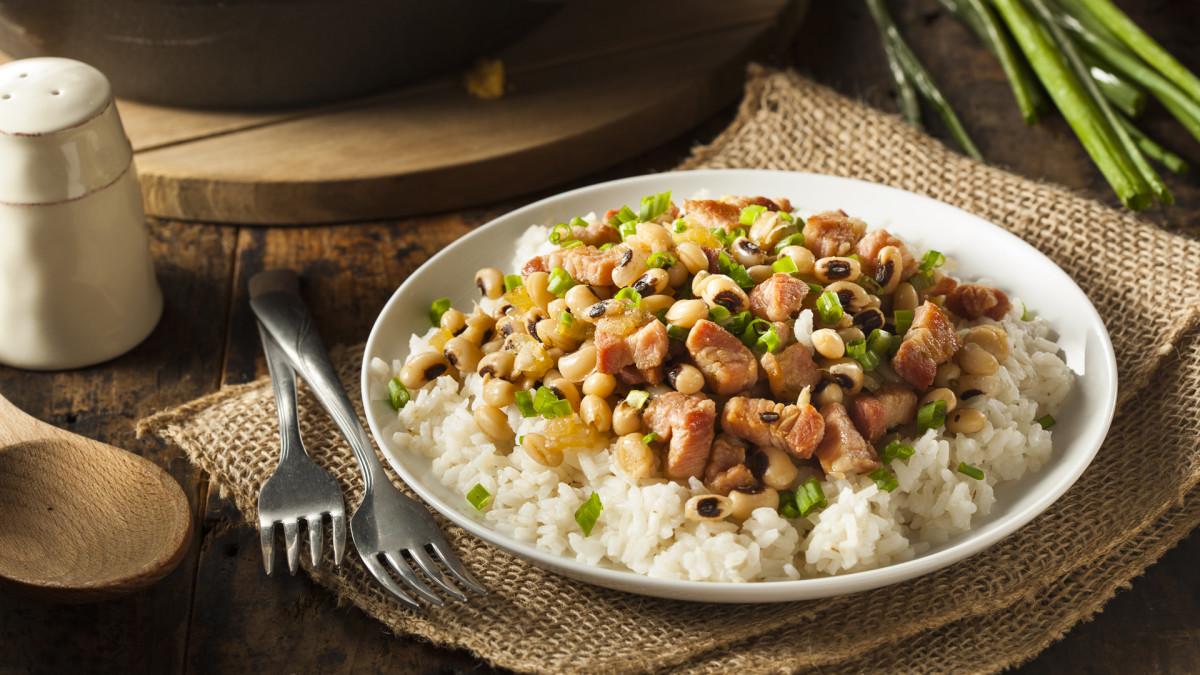 This Southern menu staple, usually a mix of black-eyed peas, rice and pork, originated with
enslaved Africans in the United States in the 19th century, most notably in the South Carolina Low
Country.
The dish was likely linked to New Year’s celebrations because enslaved Africans prepared and ate
it during a period when they had some rare time off from harvesting and planting. The dish may have
then have developed into a good-luck meal, according to the Washington Post.
The first known time the hoppin’ John name appeared in print, according to The New York
Times, was in the novel Recollections of a Southern Matron in 1838. Often served with
collard greens and cornbread, some food historians attribute the dish’s unusual name to a take on
"pois pigeons," French for dried peas and pronounced "paw-peejohn," which may have
sounded like "hoppin' John" to English speakers.
Some correlate the black-eyed peas shape to coins (other traditions include eating 12 peas on New
Year’s—one for each month—for good luck), while the greens signify money and cornbread stands for
gold.
This Southern menu staple, usually a mix of black-eyed peas, rice and pork, originated with
enslaved Africans in the United States in the 19th century, most notably in the South Carolina Low
Country.
The dish was likely linked to New Year’s celebrations because enslaved Africans prepared and ate
it during a period when they had some rare time off from harvesting and planting. The dish may have
then have developed into a good-luck meal, according to the Washington Post.
The first known time the hoppin’ John name appeared in print, according to The New York
Times, was in the novel Recollections of a Southern Matron in 1838. Often served with
collard greens and cornbread, some food historians attribute the dish’s unusual name to a take on
"pois pigeons," French for dried peas and pronounced "paw-peejohn," which may have
sounded like "hoppin' John" to English speakers.
Some correlate the black-eyed peas shape to coins (other traditions include eating 12 peas on New
Year’s—one for each month—for good luck), while the greens signify money and cornbread stands for
gold.
- King Cake
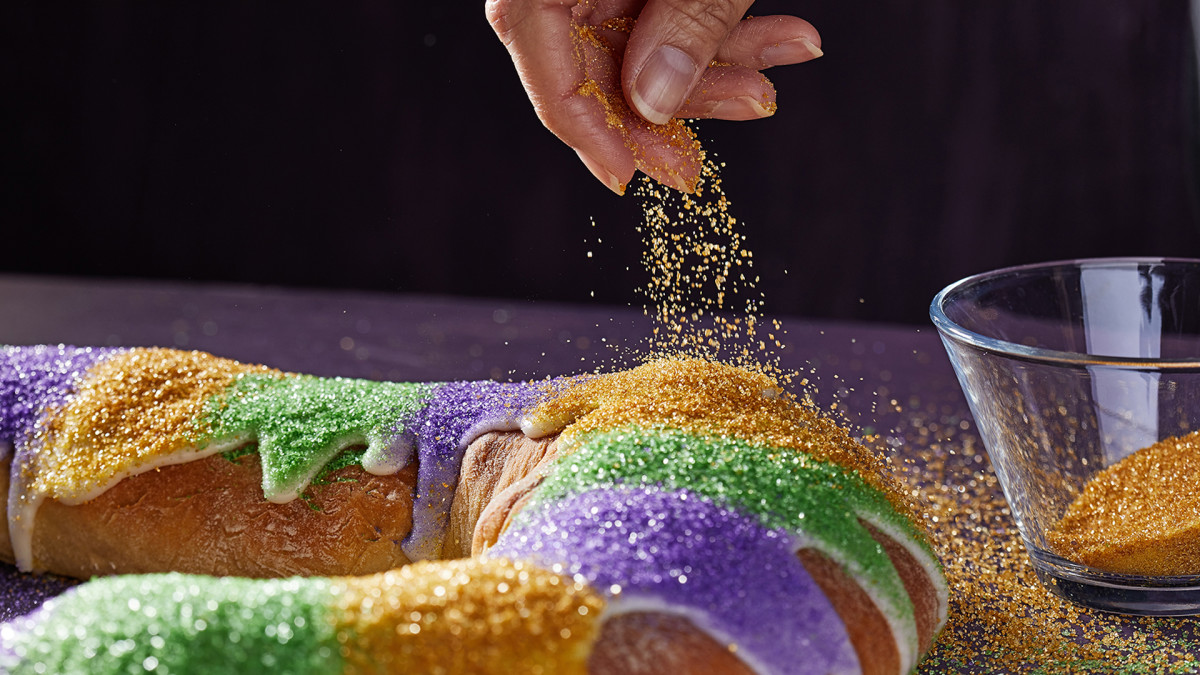 Louisianans and Mardis Gras fans know to start their year off with a sweet ringed king cake topped
with colorful icing and sprinkles and baked with a trinket, such as a plastic baby, hidden inside.
The lucky person who finds the trinket is named "king" or "queen" for the day.
Bakeries in New Orleans and throughout the nation start selling the treats in early January
through Fat Tuesday. They traditionally are eaten on January 6, known as Twelfth Night or Epiphany,
the Catholic celebration of the Magi's gifts to baby Jesus on the 12th night after his birth.
According to NPR, simple oval cakes eaten on Twelfth Night date back to Old World Europe, and the
tradition was eventually brought to America. In late 19th-century New Orleans, revelers began
hiding a bean in the cake during Mardi Gras balls. In the 1940s, commercial bakeries began
producing king cakes en masse, and upgraded from beans, pecans or rings baked inside to porcelain
dolls and eventually the plastic babies still used today.
Similarly, the vasilopita, served in Greece and Cyprus, often is baked with a coin inside
and is served New Year's Day. Other versions can be found in Spain (rosca de reyes),
Portugal (bola-re) and France (gateau de rois).
Louisianans and Mardis Gras fans know to start their year off with a sweet ringed king cake topped
with colorful icing and sprinkles and baked with a trinket, such as a plastic baby, hidden inside.
The lucky person who finds the trinket is named "king" or "queen" for the day.
Bakeries in New Orleans and throughout the nation start selling the treats in early January
through Fat Tuesday. They traditionally are eaten on January 6, known as Twelfth Night or Epiphany,
the Catholic celebration of the Magi's gifts to baby Jesus on the 12th night after his birth.
According to NPR, simple oval cakes eaten on Twelfth Night date back to Old World Europe, and the
tradition was eventually brought to America. In late 19th-century New Orleans, revelers began
hiding a bean in the cake during Mardi Gras balls. In the 1940s, commercial bakeries began
producing king cakes en masse, and upgraded from beans, pecans or rings baked inside to porcelain
dolls and eventually the plastic babies still used today.
Similarly, the vasilopita, served in Greece and Cyprus, often is baked with a coin inside
and is served New Year's Day. Other versions can be found in Spain (rosca de reyes),
Portugal (bola-re) and France (gateau de rois).
- Tamales
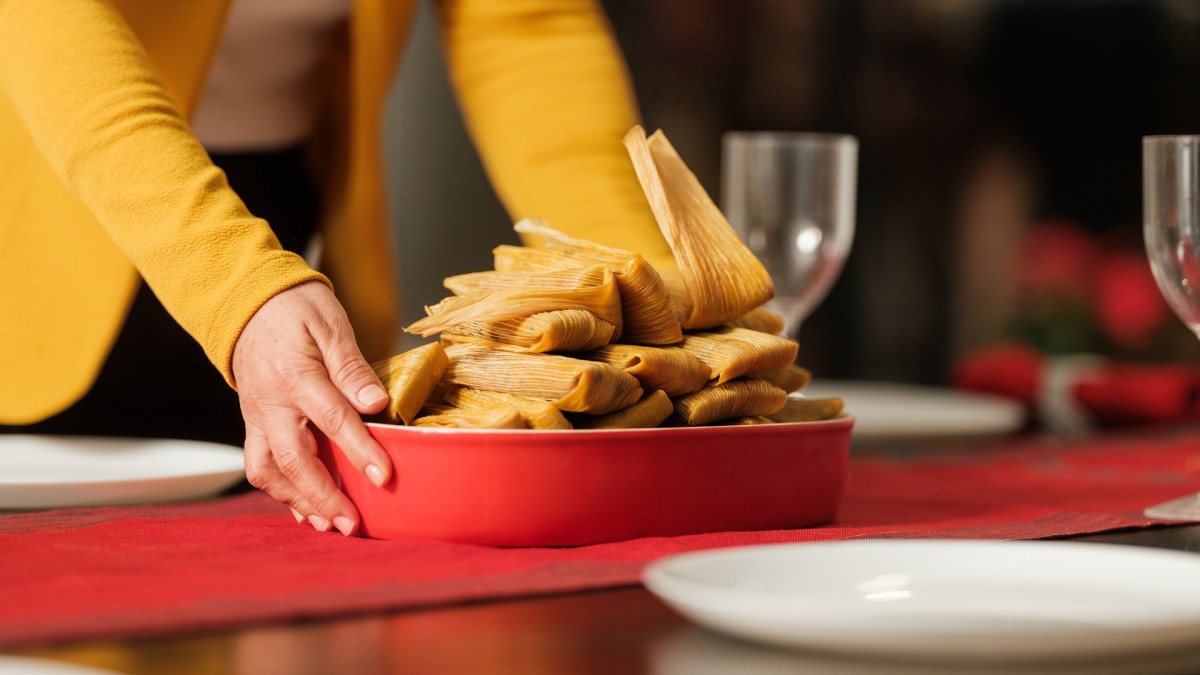 Tamales, those bundles of masa stuffed with meat, wrapped in corn husks and steamed, have come to
symbolize family, as generations often gather in the kitchen to make the labor-intensive food that
will be eaten all holiday season long. In Mexico, that spans from December 12, the Feast of Our
Lady of Guadalupe, to January 6, Three Kings' Day.
Tamales date to 8000 to 5000 B.C. and Mesoamerican cultures including the Mayans and Aztecs, and,
according to The New York Times, they arrived in U.S. points of entry, such as Los Angeles
and San Antonio, and were sold by street vendors in the 1870s. Migrant Mexican workers helped the
dish spread to other areas of the country.
Tamales, those bundles of masa stuffed with meat, wrapped in corn husks and steamed, have come to
symbolize family, as generations often gather in the kitchen to make the labor-intensive food that
will be eaten all holiday season long. In Mexico, that spans from December 12, the Feast of Our
Lady of Guadalupe, to January 6, Three Kings' Day.
Tamales date to 8000 to 5000 B.C. and Mesoamerican cultures including the Mayans and Aztecs, and,
according to The New York Times, they arrived in U.S. points of entry, such as Los Angeles
and San Antonio, and were sold by street vendors in the 1870s. Migrant Mexican workers helped the
dish spread to other areas of the country.
- Soba Noodles
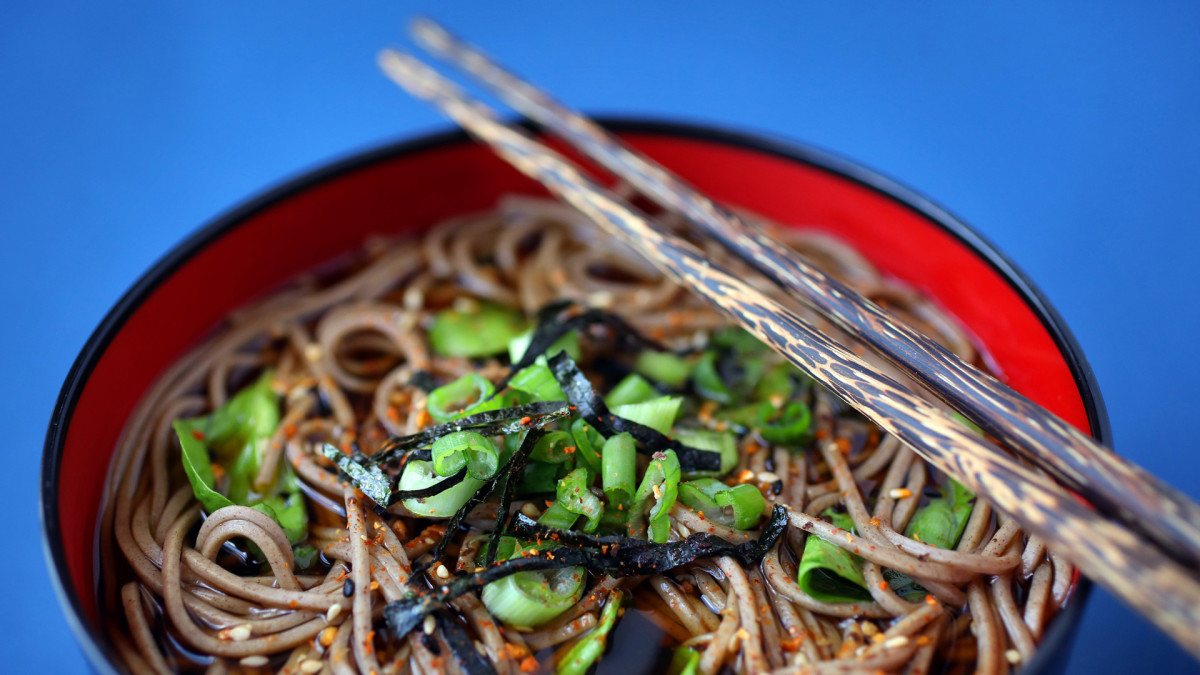 Ringing in the year with toshikoshi soba, a soup with buckwheat "year-crossing" noodles, is
a New Year's Eve tradition in Japan steeped in tradition and now practiced in the United States.
According to The Japan Times, toshikoshi means "to climb or jump from the old year to
the new."
The long, thin noodles symbolize a long, healthy life, and date back to the 13th or 14th century,
"when either a temple or a wealthy lord decided to treat the hungry populace to soba noodles on the
last day of the year."
Ringing in the year with toshikoshi soba, a soup with buckwheat "year-crossing" noodles, is
a New Year's Eve tradition in Japan steeped in tradition and now practiced in the United States.
According to The Japan Times, toshikoshi means "to climb or jump from the old year to
the new."
The long, thin noodles symbolize a long, healthy life, and date back to the 13th or 14th century,
"when either a temple or a wealthy lord decided to treat the hungry populace to soba noodles on the
last day of the year."
- 12 Lucky Grapes
 Some believe eating 12 grapes at the stroke of midnight brings good luck.
Bottles of champagne are popped the world over on New Year's Eve, but for some, it's all about
eating grapes. The Spanish tradition las doce uvas de la suerta, aka the 12 lucky
grapes, holds that eating 12 grapes at the stroke of midnight—one for each chime of the clock—will
bring good luck in the coming year.
Each grape signifies one month, and, according to the superstition, failing to finish all 12 in
time will mean misfortune in the year to come. NPR dates the custom's start in the 1880s, with
newspapers reporting Madrid bourgeoisie swiping grape and champagne traditions from the French.
Some believe eating 12 grapes at the stroke of midnight brings good luck.
Bottles of champagne are popped the world over on New Year's Eve, but for some, it's all about
eating grapes. The Spanish tradition las doce uvas de la suerta, aka the 12 lucky
grapes, holds that eating 12 grapes at the stroke of midnight—one for each chime of the clock—will
bring good luck in the coming year.
Each grape signifies one month, and, according to the superstition, failing to finish all 12 in
time will mean misfortune in the year to come. NPR dates the custom's start in the 1880s, with
newspapers reporting Madrid bourgeoisie swiping grape and champagne traditions from the French.
- Lentils
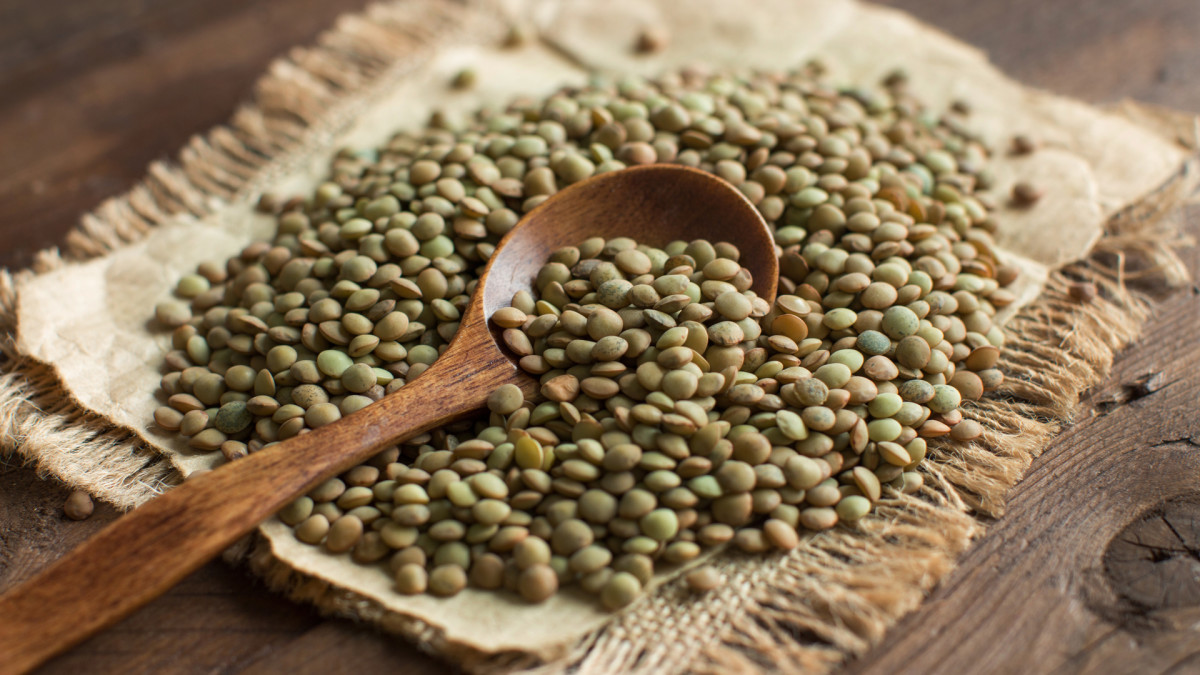 Italian New Year's Eve feasts can mean multiple courses served over several hours. One dish in the
massive spread said to bring especially good luck: lentils. Round and shaped like a coin, they're a
symbol of prosperity, and are often served with pork sausage (pork, and pigs, are also seen as
lucky).
A staple since ancient times, the legume has been traced to 8000 B.C. in northern Syria, and was
brought to America in the 16th century by the Portuguese and Spanish.
Italian New Year's Eve feasts can mean multiple courses served over several hours. One dish in the
massive spread said to bring especially good luck: lentils. Round and shaped like a coin, they're a
symbol of prosperity, and are often served with pork sausage (pork, and pigs, are also seen as
lucky).
A staple since ancient times, the legume has been traced to 8000 B.C. in northern Syria, and was
brought to America in the 16th century by the Portuguese and Spanish.
- Pickled Herring
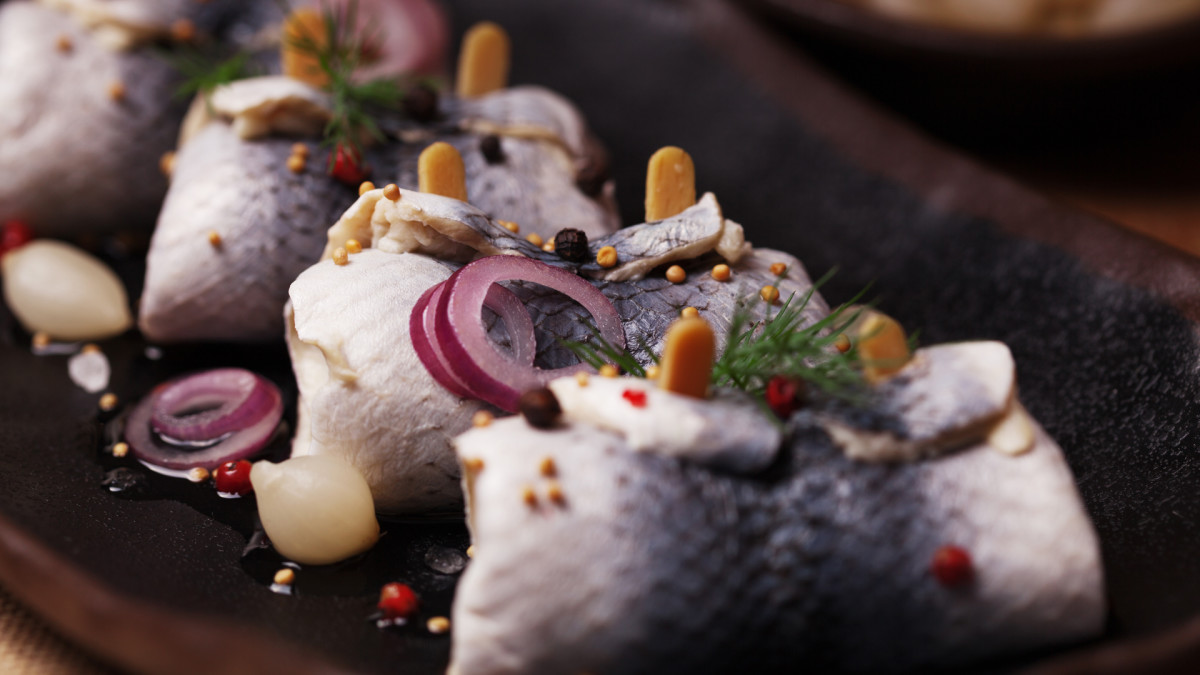 Fish, symbolic of fertility, long life and bounty (plus the color silver represents fortune), is a
popular New Year's Eve dish in many cultures, and especially so for those of Scandinavian, German
and Polish descent. Pickled herring, a small oily fish, is often served at New Year's Eve
smorgasbords.
Herring has been a standard Scandinavian, Dutch and Northern European dish since the Middle Ages,
due in part to its abundance—which it has become symbolic of, making it a popular, lucky New Year
tradition. It’s especially carried on in the U.S. in states such as Minnesota, Wisconsin and Iowa,
which have large Norwegian populations.
Fish, symbolic of fertility, long life and bounty (plus the color silver represents fortune), is a
popular New Year's Eve dish in many cultures, and especially so for those of Scandinavian, German
and Polish descent. Pickled herring, a small oily fish, is often served at New Year's Eve
smorgasbords.
Herring has been a standard Scandinavian, Dutch and Northern European dish since the Middle Ages,
due in part to its abundance—which it has become symbolic of, making it a popular, lucky New Year
tradition. It’s especially carried on in the U.S. in states such as Minnesota, Wisconsin and Iowa,
which have large Norwegian populations.
- Pork and Sauerkraut
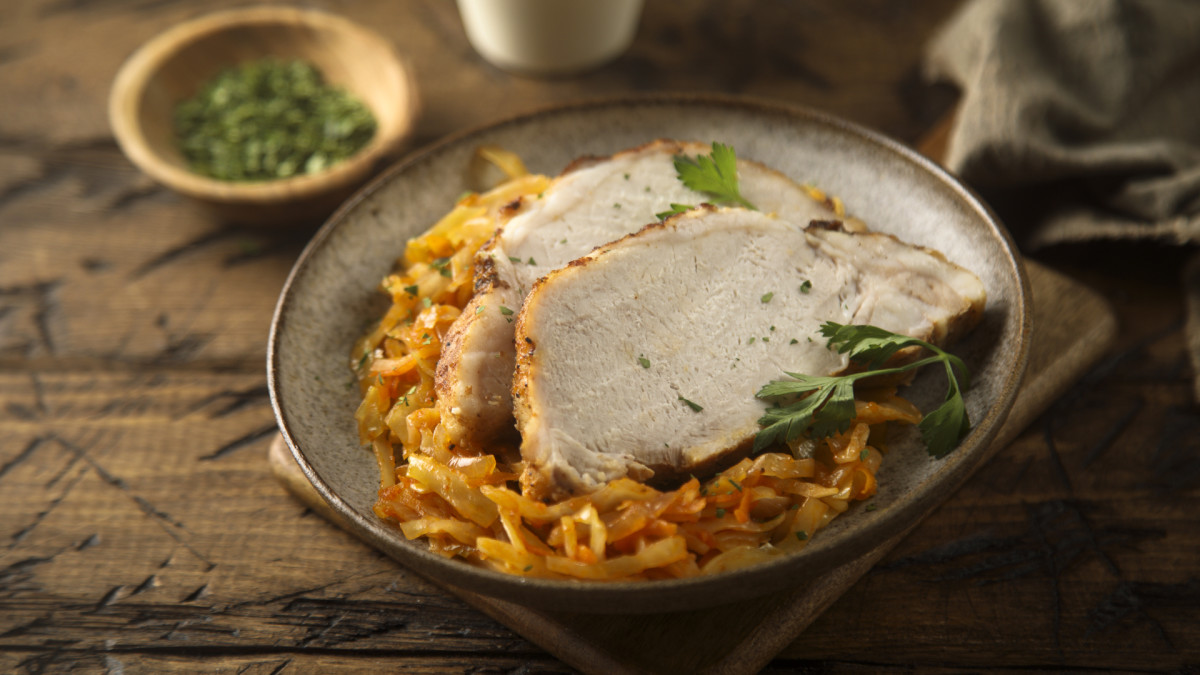 While Southerners may dig into hoppin' John, those in parts of Pennsylvania and Ohio savor slow-
cooked pork and sauerkraut on New Year's Day. The dish is said to bring good luck and progress
because pigs are known to root forward, or move ahead, while sauerkraut is made with cabbage, which
is tied to symbolic riches and prosperity and a long life thanks to its long strands.
The Germanic tradition was brought to America by the Pennsylvania Dutch. Fresh pork was the star
of Christmas and New Year's meals for early settlers because of its timing with winter hog
butchering, and sauerkraut was served as a side dish because winter was also cabbage harvesting
season.
While Southerners may dig into hoppin' John, those in parts of Pennsylvania and Ohio savor slow-
cooked pork and sauerkraut on New Year's Day. The dish is said to bring good luck and progress
because pigs are known to root forward, or move ahead, while sauerkraut is made with cabbage, which
is tied to symbolic riches and prosperity and a long life thanks to its long strands.
The Germanic tradition was brought to America by the Pennsylvania Dutch. Fresh pork was the star
of Christmas and New Year's meals for early settlers because of its timing with winter hog
butchering, and sauerkraut was served as a side dish because winter was also cabbage harvesting
season.
- New Year's Pretzel
German-Americans who aren't eating pork and sauerkraut on January 1 are probably enjoying a special New Year's pretzel instead. The German good-luck symbol, which some say dates back to the early 20th century in Sandusky, Ohio, is more sweet than savory, topped with a glaze rather than salt and often served at breakfast or brunch. Pittsburgh magazine says the pretzel, which can also be punctuated with nuts and candied fruit, is said to bring good luck for the coming year.